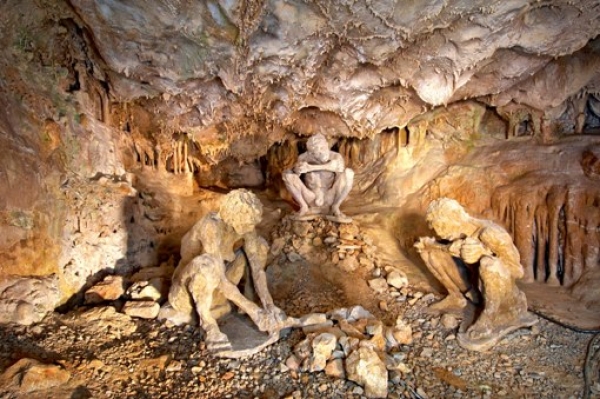Petralona Cave | Halkidiki
Wednesday, 19 April 2017 19:28Petralona Cave
Distance from Nea Kallikrateia only 15.6 Km and about 20 mins driving you can meet one of the most extraordinary cave,The Petralona Cave , in the area of North Greece.
The bejewelled with stalagmites and stalactites Petralona Cave has been developed on the western side of the limestone Katsika mountain (~700 m height) and 300 m above sea level. The Cave was spotted in 1959 by the inhabitant of the Petralona village Philippos Chatzaridis and it became internationally known when the fossilized skull of Petralona man was found by a group of six men (three of them scientists), guided by another villager, Christos Sariannidis.
The systematic excavations in the Cave started in 1965 by the founder of the Anthropological Association of Greece Ph.D. professor of anthropology Aris Poulianos. His research proved that Petralona Archanthropus (i.e. an archaic Homo sapiens) has an age of about 700.000 years ago, which is the oldest known Europeoid man. This chronology is based on the detail analysis of the Cave stratigraphy (until today 34 geological layers have been excavated). Also, it is based on the study of the Palaeolithic tools, as well as the exact diagnosis of the Palaeofauna species, which have been discovered in almost all layers.
Among the fossils of the extinct species found in the Cave lions, hyenas, bears, panthers, elephants, rhinos, megacerines, bisons, and various species of dears and equids (horse like) are included, as well as 25 species of birds, 16 species of rodents and 17 species of bats.
A considerable aid, in reconfirming the age of the Petralona man is the contribution of the methods advanced by nuclear physics. The materials used for such a purpose were bones, argil, stalagmites and ashes. The later are traces of fire - the earliest, which have ever been lightened by human hands on earth.
All fossils and the other findings are deposited in the adjacent Anthropological Museum, which you may also visit here in a separate iconic web sightseeing.
Entering the Anthropological Museum the visitor sees in the hall a mural, which shows the scale of the evolution of life according to Aristotle. Although evolutionary theory today has been enriched with more detailed evidence, impressive segregation in vertebrates and invertebrates, in suspended and anemia and that the nature goes from inanimate to empsycha.archanthr1
In the exhibit hall, there are fossils from the excavations of the Anthropological Association of Greece, from open sites (Triglia, Eordea etc.), which identified traces of ancestors of Archanthropinae of prospilaias period. Here are the findings from the cave itself (including stone and bone tools, fossilized bones, traces of the oldest fire that never lit man's hand on Earth), and for comparison Paleolithic, Mesolithic and Neolithic tools from different regions of Greece, but also some similar findings and casts from other countries.
The faithful representation of the point found the skull and the skeleton of the ancient man.
In the center of the room there is a faithful representation of the site found the skull and bones of ancient man, work done in several months working with architect Peter Devoli and his wife Maria.
A total of 400 out shelves with bilingual explanatory legible signs, more than 2500 findings. Visit for Virtual Tour and more information
